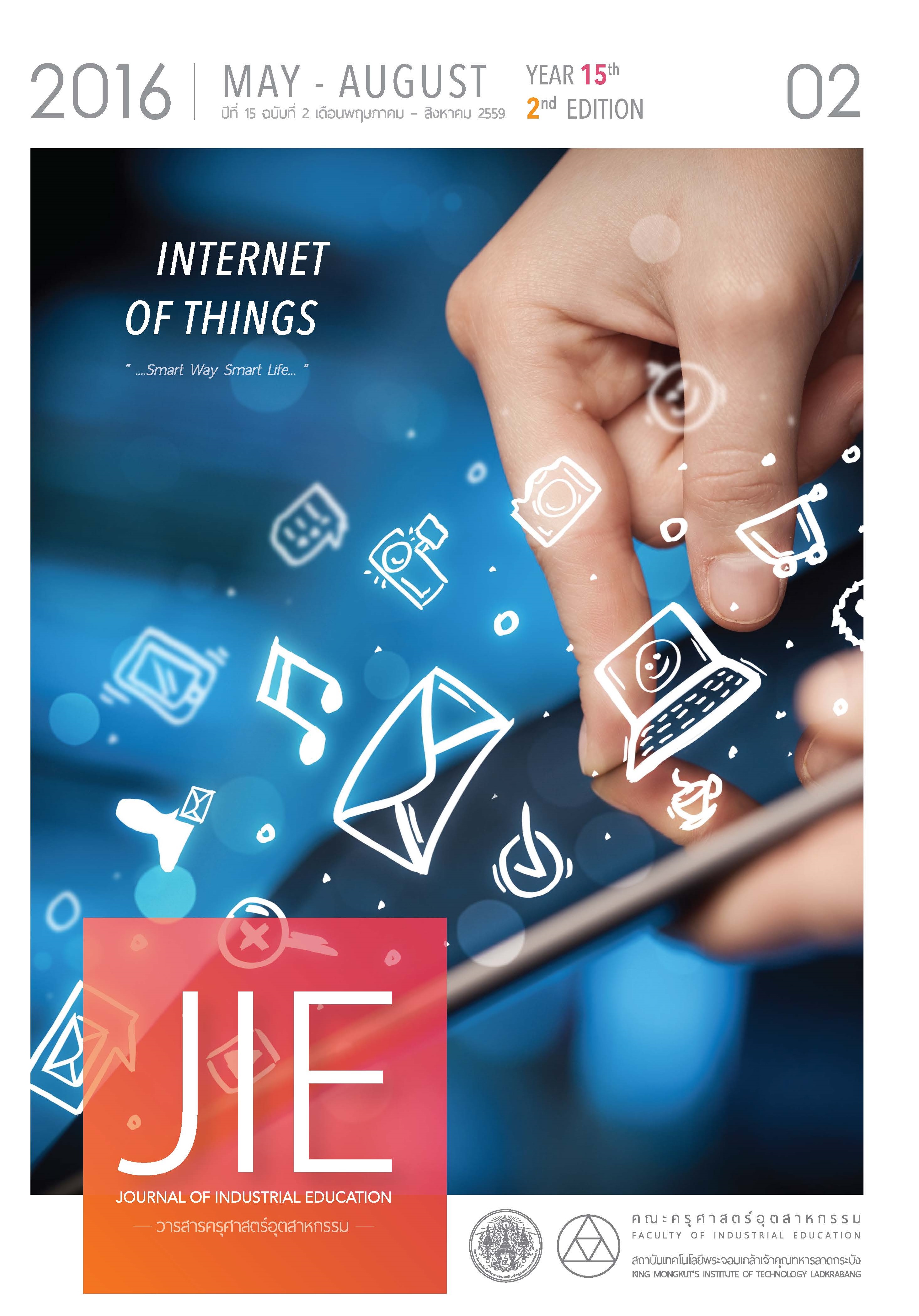CORPUS-BASED ERROR ANALYSIS OF THAI STUDENTS’ LABORATORY SCIENTIFIC ABSTRACT WRITING IN ENGLISH
Main Article Content
Abstract
The aims of this study were to analyze and compare the main causes of common errors of Thai students using the corpus-based approach. The samples were two groups of upper secondary school students (Grade 11) at Watsuthiwararam School, Bangkok who enrolled Physics Laboratory Technique course in 2014. They were divided into two groups by simple random sampling: (1) the experimental group and (2) the control group. The instruments were (1) a corpus of 540 Laboratory Scientific Abstracts (LSA) written by the participants, (2) an error classification recording scheme, (3) lesson plans for teaching scientific abstract writing in English, and (4) a guided interview for investigating the causes of errors. After the corpus was compiled, the errors and causes of errors were categorized. The frequency and percentage of errors were counted and calculated using Markin 4.2.2 and AntConc 3.2.4 software. Chi–square test (c2-test) was used to compare the errors committed by the two groups of students. The results were as follows: (1) The top three morphological errors were the omission of article “the” (9.62%), the omission of article “a” or “an” (8.35%), and the subject-verb agreement (4.65%), respectively. (2) The top three syntactic errors were the misuse of active voice (5.79%), the misplacement of verb (4.51%), and the incorrect form of parallel structure (3.87%). (3) The top three mechanical errors were the use of commas (9.85%), periods (5.04%), and capitalization of words (2.75%). (4) For lexical errors, misspelling (7.82%) was found more than homonym words (0.15%). (5) The top three semantic errors included specific term usage (0.98%), wrong collocation usage (0.97%), and the more general term usage (0.71%). The results indicated that there was statistical difference of errors between the two groups at .01 level of significance. The main causes of error were the L1 interference (33.33%), and the misconception in language rules (31.93%).
Article Details
"The opinions and contents including the words in papers are responsibility by the authors."
"ข้อคิดเห็น เนื้อหา รวมทั้งการใช้ภาษาในบทความถือเป็นความรับผิดชอบของผู้เขียน"
References
[2] Bazerman, C. (1995). The Informed Writer. 5thed. Boston: Houghton Mifflin.
[3] Sattayatham, A. and Ratanapinyowong, P. (2008). Analysis of Errors in Paragraph Writing in English by First Year Medical Students from The Four Medical Schools, Mahidol University. Silapakorn University International Journal, 8, 17-38.
[4] Nopjirapong, R. (2010). An Analysis of Article Error in Thai university student’s Composition. Master’s project,M.A. Bangkok: Graduate school, Srinakharinwirot University.
[5] Ratchawicha, S. (2012). An Error Analysis of Mattayom 3 Student’s Guided Compositions at Saint Anthony School, Chachonegsao Province. Research articles Graduate School of Language and Communication, 1, 12-21.
[6] Corder, S.P. (1981). Error Analysis and Interlanguage. Oxford: Oxford University.
[7] Ferris, D. (2002). Treatment of Error in Second Language Student Writing. Ann Arbor: University of Michigan Press.
[8] James, C. (1998). Errors in Language Learning and Use. England: Addison Wesley Longman.
[9] Bryan, P. (2010). Thesis Manual. Virginia: University of Virginia.
[10] Díaz-Negrillo, A. and García-Cumbreras, A. M. (2007). A tagging tool for error analysis on learner corpora. ICAME Journal, 31, 197-203.
[11] Harmer, J. (2007). The Practice of English Language Teaching. 4thed. London: Pearson Longman.
[12] Norrish, J. (1983). Language Learning and Their Errors. London: Macmillan Publisher
[13] Brown, H.D. (1980). Principles of Language Learning and Teaching. New Jersey: Prentice-Hall Inc.
[14] Richards, J.C. (1971). A Noncontrastive Approach to Error Analysis. English Language Teaching Journal, 25, 204-219
[15] Yamane, Taro. 1967. Statistics, An Introductory Analysis. 2nd Ed.New York: Harper and Row
[16] Nopjirapong, R. (2010). An Analysis of Article Errors in Thai university student’s Composition. Master’s project, M.A. Bangkok: Graduate school, Srinakharinwirot University.
[17] Bumroongthai, G. (2010). An Error Analysis in English Paragraph Writing by Students of the Faculty of Liberal Arts Rajamangala University of Technology PhraNakhon. Bangkok: Rajamangala University of Technology hraNakhon.

